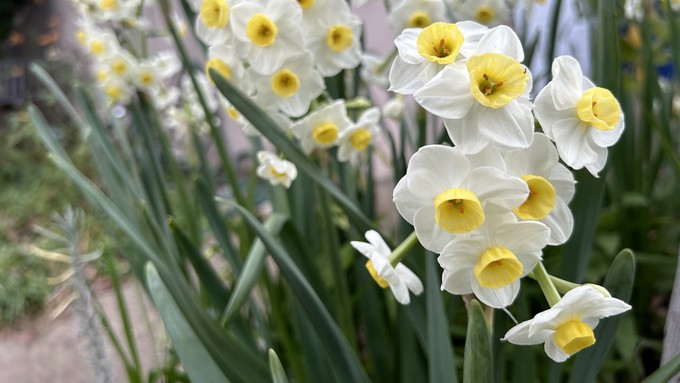
Warm days and early blooms belie true weather conditions

These narcissus seem to be ready for spring, but we still have several weeks of winter ahead of us. Kathy Morrison
This weekend will feel almost balmy in Sacramento. According to the National Weather Service, we could hit 70 degrees on Sunday and Monday – 16 degrees above average for the last week in January.
While other parts of the country are still digging out from snow, are we headed for an early spring?
Anecdotally, several signs of impending change (and warmth) fill my garden. Japonica camellias and daffodils are starting to open – weeks ahead of their usual appearance. Rose bushes are pushing out new growth. Those bushes still waiting to be pruned are already blooming again.
But all this spring-like growth and weather could be just an illusion. We’re still in winter – and will be for several more weeks.
Although we can enjoy these few warm winter days, our highs will be back in the low 50s by next weekend. That return to “normal” temperatures will be accompanied by another storm system that’s currently charging across the Pacific Ocean. When, where and how much rain it will deliver are still to be determined.
“A wet system will likely bring widespread precipitation around the end of the month,” noted the weather service on Friday. This system has “potential for gusty winds, heavy rain and heavy high elevation snow.”
We’ve already had a wet January. According to the weather service, downtown Sacramento has recorded 3.11 inches so far this month (through Thursday); that tracks .15 inches above average through that date.
Daytime temperatures also have been on the warm side, with highs averaging 56.4 degrees – almost a full degree above normal.
Saturday represents another kind of weather benchmark. After decades of recommending a “last frost” date of mid March, most experts now cut off our frost period at the end of January. According to the Sacramento County master gardeners, our average last frost date is Jan. 27.
But still keep those frost cloths handy, just in case. In 2022, Sacramento hit 32 degrees on Feb. 24 and dipped down to 35 degrees on March 6. Our latest-ever freeze on record (30 degrees) hit March 27, 1898.
And wait to set out those spring seedlings until temperatures stabilize in late March – when it really is spring.
For weather updates: https://www.weather.gov/sto/.
Comments
0 comments have been posted.Sacramento Digs Gardening to your inbox.
Sites We Like
Garden Checklist for week of July 21
Your garden needs you!
* Keep your vegetable garden watered, mulched and weeded. Water before 8 a.m. to reduce the chance of fungal infection and to conserve moisture.
* Feed vegetable plants bone meal, rock phosphate or other fertilizers high in phosphate to stimulate more blooms and fruiting. (But wait until daily high temperatures drop out of the 100s.)
* Don’t let tomatoes wilt or dry out completely. Give tomatoes a deep watering two to three times a week.
* Harvest vegetables promptly to encourage plants to produce more. Squash especially tends to grow rapidly in hot weather. Keep an eye on zucchini.
* Pinch back chrysanthemums for bushy plants and more flowers in September.
* Remove spent flowers from roses, daylilies and other bloomers as they finish flowering.
* Pinch off blooms from basil so the plant will grow more leaves.
* Cut back lavender after flowering to promote a second bloom.
* It's not too late to add a splash of color. Plant petunias, snapdragons, zinnias and marigolds.
* From seed, plant corn, pumpkins, radishes, winter squash and sunflowers.